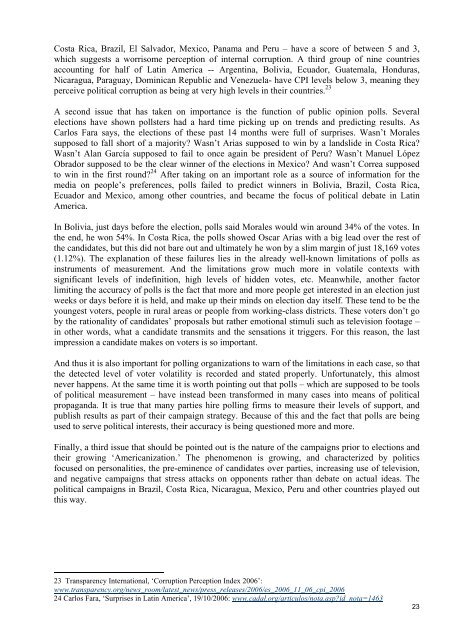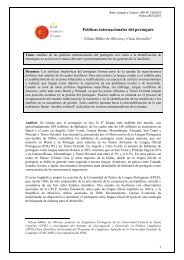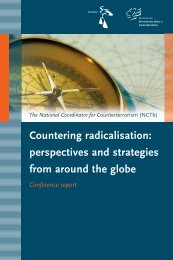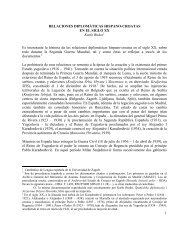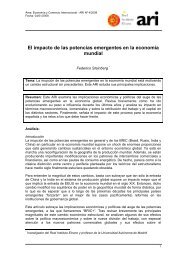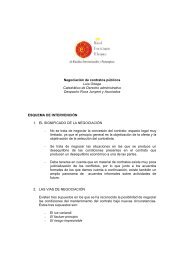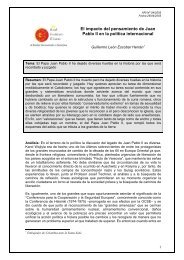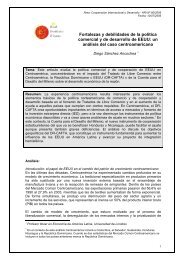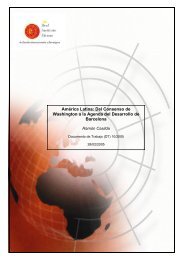Download PDF - Real Instituto Elcano
Download PDF - Real Instituto Elcano
Download PDF - Real Instituto Elcano
- No tags were found...
Create successful ePaper yourself
Turn your PDF publications into a flip-book with our unique Google optimized e-Paper software.
Costa Rica, Brazil, El Salvador, Mexico, Panama and Peru – have a score of between 5 and 3,which suggests a worrisome perception of internal corruption. A third group of nine countriesaccounting for half of Latin America -- Argentina, Bolivia, Ecuador, Guatemala, Honduras,Nicaragua, Paraguay, Dominican Republic and Venezuela- have CPI levels below 3, meaning theyperceive political corruption as being at very high levels in their countries. 23A second issue that has taken on importance is the function of public opinion polls. Severalelections have shown pollsters had a hard time picking up on trends and predicting results. AsCarlos Fara says, the elections of these past 14 months were full of surprises. Wasn’t Moralessupposed to fall short of a majority? Wasn’t Arias supposed to win by a landslide in Costa Rica?Wasn’t Alan García supposed to fail to once again be president of Peru? Wasn’t Manuel LópezObrador supposed to be the clear winner of the elections in Mexico? And wasn’t Correa supposedto win in the first round? 24 After taking on an important role as a source of information for themedia on people’s preferences, polls failed to predict winners in Bolivia, Brazil, Costa Rica,Ecuador and Mexico, among other countries, and became the focus of political debate in LatinAmerica.In Bolivia, just days before the election, polls said Morales would win around 34% of the votes. Inthe end, he won 54%. In Costa Rica, the polls showed Oscar Arias with a big lead over the rest ofthe candidates, but this did not bare out and ultimately he won by a slim margin of just 18,169 votes(1.12%). The explanation of these failures lies in the already well-known limitations of polls asinstruments of measurement. And the limitations grow much more in volatile contexts withsignificant levels of indefinition, high levels of hidden votes, etc. Meanwhile, another factorlimiting the accuracy of polls is the fact that more and more people get interested in an election justweeks or days before it is held, and make up their minds on election day itself. These tend to be theyoungest voters, people in rural areas or people from working-class districts. These voters don’t goby the rationality of candidates’ proposals but rather emotional stimuli such as television footage –in other words, what a candidate transmits and the sensations it triggers. For this reason, the lastimpression a candidate makes on voters is so important.And thus it is also important for polling organizations to warn of the limitations in each case, so thatthe detected level of voter volatility is recorded and stated properly. Unfortunately, this almostnever happens. At the same time it is worth pointing out that polls – which are supposed to be toolsof political measurement – have instead been transformed in many cases into means of politicalpropaganda. It is true that many parties hire polling firms to measure their levels of support, andpublish results as part of their campaign strategy. Because of this and the fact that polls are beingused to serve political interests, their accuracy is being questioned more and more.Finally, a third issue that should be pointed out is the nature of the campaigns prior to elections andtheir growing ‘Americanization.’ The phenomenon is growing, and characterized by politicsfocused on personalities, the pre-eminence of candidates over parties, increasing use of television,and negative campaigns that stress attacks on opponents rather than debate on actual ideas. Thepolitical campaigns in Brazil, Costa Rica, Nicaragua, Mexico, Peru and other countries played outthis way.23 Transparency International, ‘Corruption Perception Index 2006’:www.transparency.org/news_room/latest_news/press_releases/2006/es_2006_11_06_cpi_200624 Carlos Fara, ‘Surprises in Latin America’, 19/10/2006: www.cadal.org/articulos/nota.asp?id_nota=146323


